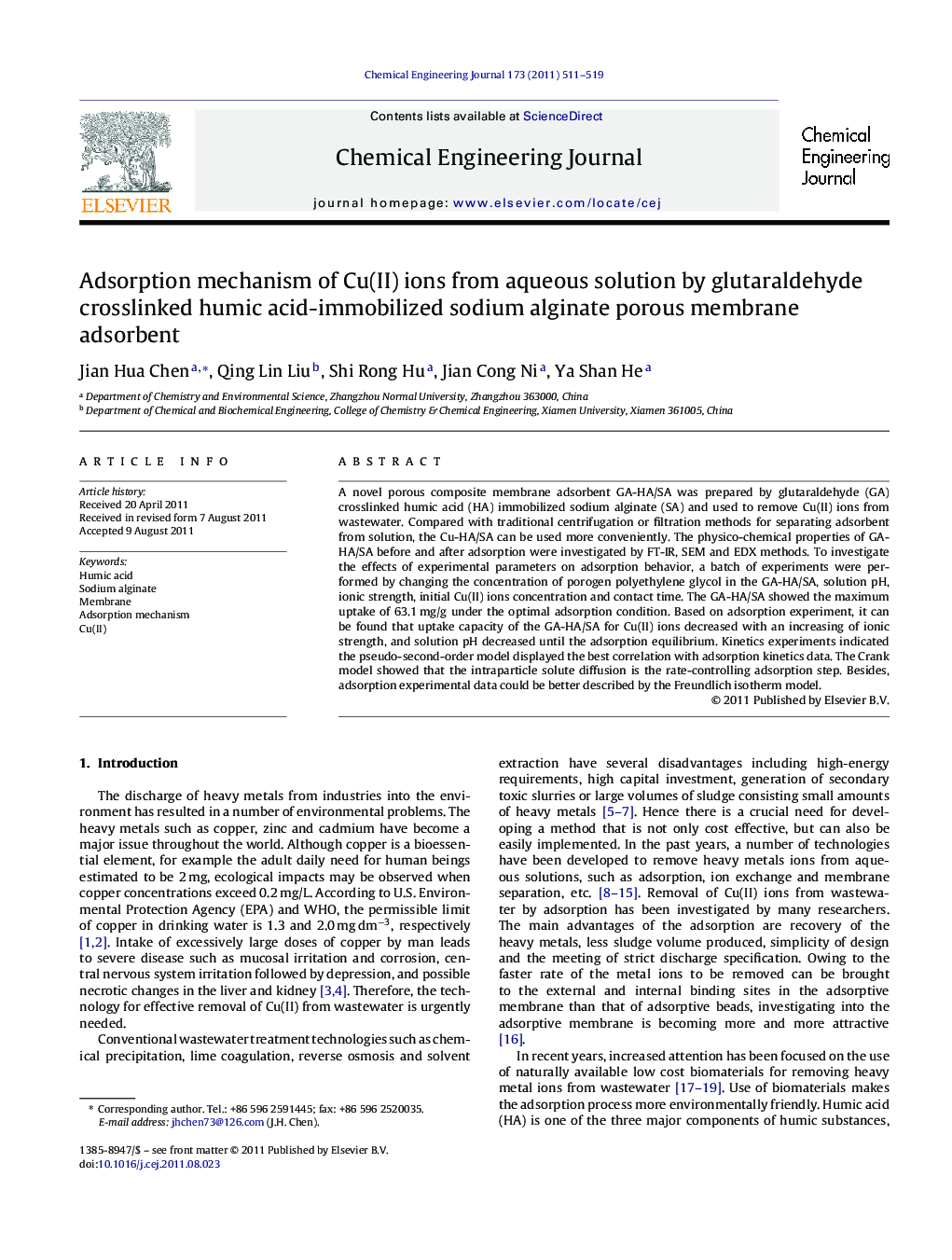| Article ID | Journal | Published Year | Pages | File Type |
|---|---|---|---|---|
| 150736 | Chemical Engineering Journal | 2011 | 9 Pages |
A novel porous composite membrane adsorbent GA-HA/SA was prepared by glutaraldehyde (GA) crosslinked humic acid (HA) immobilized sodium alginate (SA) and used to remove Cu(II) ions from wastewater. Compared with traditional centrifugation or filtration methods for separating adsorbent from solution, the Cu-HA/SA can be used more conveniently. The physico-chemical properties of GA-HA/SA before and after adsorption were investigated by FT-IR, SEM and EDX methods. To investigate the effects of experimental parameters on adsorption behavior, a batch of experiments were performed by changing the concentration of porogen polyethylene glycol in the GA-HA/SA, solution pH, ionic strength, initial Cu(II) ions concentration and contact time. The GA-HA/SA showed the maximum uptake of 63.1 mg/g under the optimal adsorption condition. Based on adsorption experiment, it can be found that uptake capacity of the GA-HA/SA for Cu(II) ions decreased with an increasing of ionic strength, and solution pH decreased until the adsorption equilibrium. Kinetics experiments indicated the pseudo-second-order model displayed the best correlation with adsorption kinetics data. The Crank model showed that the intraparticle solute diffusion is the rate-controlling adsorption step. Besides, adsorption experimental data could be better described by the Freundlich isotherm model.
► The uptake capacity of GA-HA/SA for Cu(II) ions was encouraging. ► Adsorption equilibrium was obtained within 60 min. ► Ionic strength and solution pH greatly affected uptake capacity of the GA-HA/SA. ► Adsorption of Cu(II) ions was mainly controlled by the intraparticle diffusion.
